With 20 years'development, Haomei has grown into a top aluminium alloy manufacturers and suppliers. We have comprehensive kinds of aluminium sheets, aluminum coil, aluminum strip, aluminum foil, aluminum discs, aluminum tread plate, color coated aluminum and CTP plates, covering series-1, series-3,series-5, series-6 and series-8. You can realize one-stop purchase in Haomei.
How to Test Color Coated Aluminum Coil Quality?
The Manufacturing Process and Uses of Brushed and Polished Aluminum Strips
Brushed aluminum strip
Brushed aluminum strip is an aluminium strip product with a brushed texture on the surface that is obtained by using the power of a machine to process the aluminum coil through a series of processes.
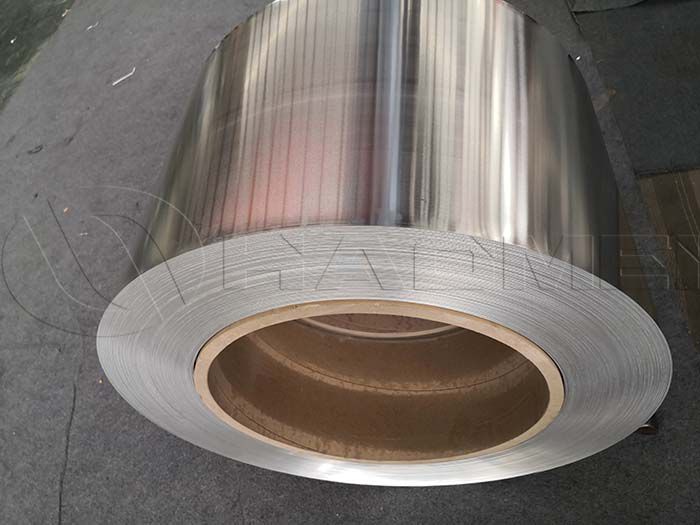
1. The selection of raw materials
First of all, you need to choose high-quality aluminum alloy materials that meet national standards. This material has good surface smoothness and mechanical strength, and will be more beautiful and durable after wire drawing treatment.
2. Blank processing
Cut the purchased aluminum coils into sizes suitable for processing. Or directly purchase aluminum coils of appropriate size.
After cutting, aluminum coils need to be deburred and surface treated. The deburring process is performed by machine and removes any sharp edges remaining on the surface, giving the overall appearance a smoother appearance. Surface treatment uses pickling and oxidation methods to make the surface clean and smooth to prepare for the subsequent wire drawing process.
3. Wire drawing processing
The aluminum coil is fed into the processing area of the wire drawing machine, and the power of the machine produces regular fine drawing stripe textures on the surface of the aluminum coil. The direction is generally perpendicular to the length of the aluminum coil, which increases the surface gloss and hardness and has certain anti-scratch and anti-corrosion properties.
4. Cutting and packaging
The aluminum coils after wire drawing can be cut into the required length and width, and then carefully packaged for transportation and storage without damaging the surface of the aluminum coils.
Polished aluminum strip
The bright and delicate surface of high-end polished aluminum strip not only adds vitality to the room, but its reflective effect can also make the room brighter and more transparent. The simple style creates a pleasing feeling. Therefore, as people's requirements for decoration quality continue to increase and decoration consumption concepts continue to change, more and more hotels, especially high-end hotels, choose mirror aluminum.
Using mirror finish aluminum flat strip as furniture frames and other parts can enhance product fashion, improve product quality, and attract consumers' attention. Therefore, the development of metal furniture not only alleviates the shortage of wood, but also improves its excellent strength performance and high-end surface texture.
Many modern minimalist-style furniture have begun to use polished aluminum strip and sheet as basic materials, and many common home appliances such as washing machines, refrigerators, color TVs, lighting and home decoration products have mirror aluminum elements.
Original source: https://www.aluminumstrip24.com/news/the-manufacturing-process-and-uses-of-brushed-and-polished-aluminum-strips.html
What Is Thickness of Standard Aluminum Foil
Choosing the thickness of aluminum foil mainly depends on the purpose for which it is used. Generally speaking, the thickness of standard aluminum foil is between 0.01mm and 0.2mm, which can be selected based on the following aspects:
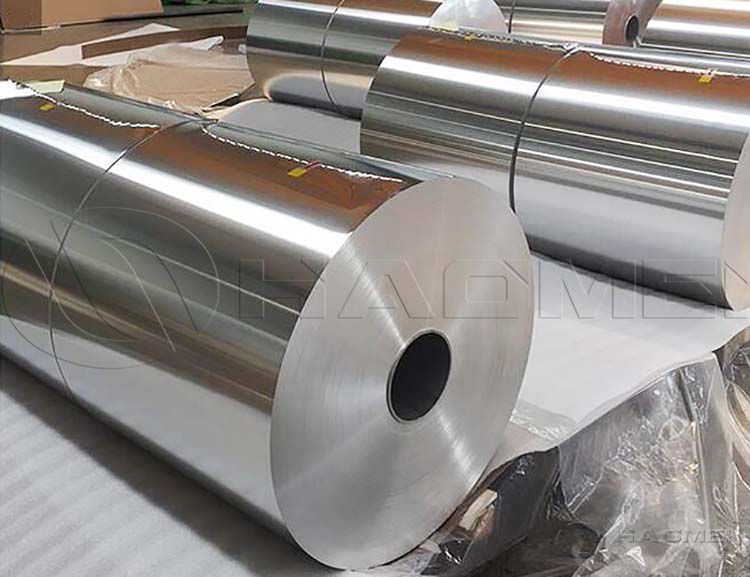
1. Food packaging: It usually chooses thinner aluminum foil paper, about 0.01mm to 0.02mm. This kind of aluminum foil can effectively maintain the freshness of food and prevent contamination such as oxygen, water vapor, odor and bacteria.
Aluminum foil for food packaging Aluminum foil used for food packaging can be made into different processes according to different uses and the size of the packaged products. The processes of aluminum foil food packaging bags include three-side sealing bags, self-standing bags, zipper bags, self-standing zipper bags,etc.
2. Medical packaging: In the pharmaceutical industry, the thickness of aluminum foil paper is usually between 0.02mm and 0.04mm. This kind of aluminum foil paper can effectively isolate the effects of light, gas, humidity, etc. on medicines and ensure the quality of medicines.
The PTP aluminum foil is generally "hard" aluminum. In the United States, most pharmaceutical foils are around 25 microns thick, 25.4 µm to be precise. In Europe, the thickness of 20.0 µm is more common, and has a greater length advantage for the same weight of raw materials. In recent years, countries have been moving towards thinner 20.0 µm aluminum foil, regardless of market.
3. Industrial application: In the industrial field, it is necessary to use aluminum foil paper with a larger thickness, approximately between 0.04mm and 0.2mm, to better prevent corrosion, electromagnetic radiation and other effects.
Cable aluminum foil is a commonly used conductive material and is widely used in electric power, communications and other fields. The thickness of cable aluminum foil will directly affect its conductive properties and mechanical strength. According to different cable specifications and requirements, it is crucial to choose the appropriate thickness. Generally speaking, common cable aluminum foil thicknesses are available in various specifications such as 0.1mm, 0.15mm, and 0.2mm.
The use of aluminum foil in air conditioners is mainly to make heat-conducting fins for air conditioner heat exchangers. Currently, the alloys of aluminum foil for air conditioners include 3102, 8011 aluminum foil, etc. The commonly used states are H22/H24/H26, and the thickness range is 0.08~0.2 mm. There are certain differences in the strength and plasticity of each state. The specific choice of which alloy grade and which state of aluminum foil depends on the actual situation.
4. Cigarette packaging: The use of aluminum foil in the tobacco packaging industry is mainly the aluminum foil of cigarette lining paper. Aluminum foil lining paper is a composite paper of tissue paper and aluminum foil. The thickness of aluminum foil is 0.006mm to 0.007mm. Generally, 0.006mm thick aluminum foil is used. It is soft and has good extensibility.
Household aluminum foil: The thickness of household aluminum foil paper is 0.016mm (standard type) to 0.0245mm (Heavy duty). But there are also ones as thin as 5µm. Small rolls of household aluminum foil usually have thicknesses of 8mic, 9mic, 10mic, 11mic, 12mic, 14mic, 15mic, 16mic, 17mic and 18mic. Now, the width of large rolls of household aluminum foil can reach 1300mm. 0.2 mm thickness household aluminum foil is a common specification.
Original source: https://www.alumfoils.com/a/what-is-thickness-of-standard-aluminum-foil.html
How to Produce 6111 6061 Automotive Aluminum Sheet
Different countries have different emphasis on aluminum alloys for automobiles. The Japanese automobile industry uses more 5xxx series alloys. The United States mostly uses 2xxx series alloys, while Europe is more interested in 6xxx series alloys. The ABS alloys that China focuses on developing are 6016, 6022, 6061 and 6111 aluminum.
It is difficult to stably produce ABS panel in batches and the technical threshold is high. It is a complex system project. The process parameters of each process should be strictly controlled in order to produce ABS with just the right combination of various properties.

In terms of the main processes, the upstream process of ABS is equivalent to the process of producing other bulk high-precision aluminum plates like smelting, casting, hot rolling, and cold rolling. In fact, the specific process parameters are different.
First of all, the alloy composition should be carefully designed, internal standards should be formulated, and the ingredients should be batched according to the internal standards to ensure that the ingot composition meets the requirements of the internal standards. The melting temperature should not be too high. It is best to control it within the limit specified in the regulations.
The charge and flux must comply with regulatory requirements and must be carefully refined, degassed, and slag removed. The amount of grain refiner added before casting should be appropriate.
During casting, a stable melt flow should be maintained, and the liquid level height, casting speed, cooling water temperature, pressure, and flow rate should be well controlled to cast an ingot with a dense and uniform dendrite grid and fine and consistent grains. The process of smelting and casting is very important. Only with high-quality ingots can high-quality aluminum sheet be rolled. Production practice shows that about 70% of defects in plate production are more or less related to smelting and casting.
Only a good structure of the hot-rolled aluminum blanks can ensure that the cold-rolled aluminum sheet has a precise and delicate crystal structure, and can ensure that ABS has good formability and flanging plasticity, achieving the best match of strength and plasticity. Homogenization annealing of the ingot is also a key process. The temperature should be higher and the holding time should be longer. It is necessary to ensure that the intra-granular deviation is completely eliminated and all the solid-soluble phases are dissolved. The cooling rate must also be appropriately controlled.
The initial rolling temperature is around 500°C, and that of 7xxx series alloy is around 475°C. The reduction rate in the first and second passes should be small, the reduction rate in the middle passes should be larger, and the final pass should be in the middle. The total reduction rate must be greater than 75 %. The casting organization must be completely eliminated. The final rolling temperature is 350℃±10℃.
Haomei Aluminum has the main 6xxx aluminum alloys like 6016 plate. Welcome to leave message below to inquire what you need.
Original source: https://www.aluminium-auto-sheet.com/a/how-to-produce-6111-6061-automotive-aluminum-sheet.html
Marine Grade Aluminum Alloys 5052 5083
The marine aluminum sheet is soaked in water all the year round and requires high corrosion resistance. The aluminum alloy 5052 is an Al-Mg alloy with excellent corrosion resistance and medium strength. It is suitable for the manufacture of economical aluminum alloy ships. In addition to being used in the hull, it can also be used in cable bridges, ship sinks, ship compartment floors and other parts on ships.
5052 aluminum sheet is a typical 5xxx aluminum alloy. The Mg content is 2.2%-2.8%. It has the characteristics of light weight, medium strength, good corrosion resistance and weldability, and easy processing and forming.
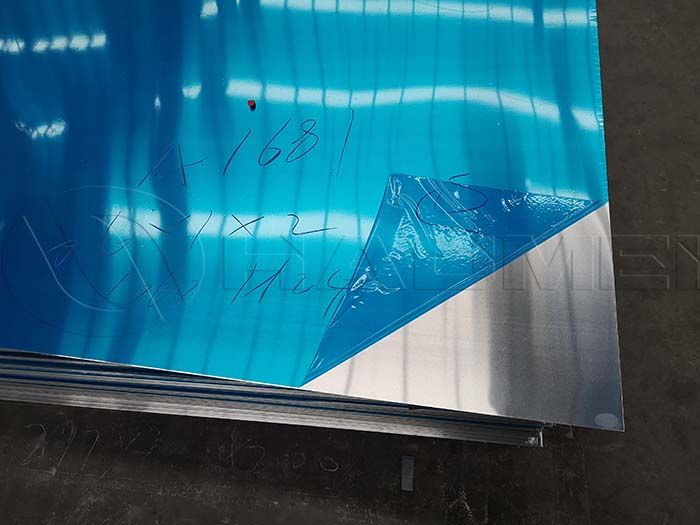
Among its mechanical properties, the tensile strength σb can reach 215-265Mpa, and the elongation δ5≥5%. Under different work hardening and heat treatment states, the mechanical properties will be different.
Aluminum alloy yachts for freshwater lakes are mostly made of 5052-H32 or 5052-0 aluminum plates, while luxury yachts on the sea are generally made of high-magnesium alloy 5083H116 or 5083H321 aluminum plates. The thickness of the marine grade aluminum alloy plate is generally 3-30mm, and the thickness below 12mm is more widely used.
In the ship design industry, the 5083 ultra-wide aluminum plate in the state of 5083H116/H321/H112 is mostly used, and it is used in the main deck of the ship, the diesel engine pedestal, the side of the ship, and the outer side of the ship. 5083 h116 aluminum plate is the most widely used military and civilian aluminum alloy in the field of ships, and has broad application prospects in the fields of military speedboats and high-speed passenger ships.
The content of Mg and Mn in the 5083 alloy is controlled at the middle and upper limits, which can ensure that the strength performance of the 5083 aluminum plate meets the requirements, and the plasticity and corrosion resistance of the 5083 aluminum sheet are also good at this time.
Cr plays a supplementary strengthening role in the 5083 alloy, which can increase the recrystallization temperature, and Ti refines the cast structure. Special attention should be paid to controlling the content of impurities Fe and Si.
When the content of Fe is high, the plasticity and corrosion resistance of the alloy will be reduced; compared with Fe, si has a greater negative impact on plasticity, and the mass fractions of Fe and Si should be controlled below 0.25% respectively.
Original source: https://www.marine-aluminium-plate.com/a/marine-grade-aluminum-alloys-5052-5083.html
5454 and 5754 Aluminum Sheet for Trailers
The 5xxx aluminum alloy grades have 5052,5083, 5754, 5182, 5454,etc. It is currently the most widely used alloy series with high cost performance, excellent processability and weldability. Therefore, 5000 series aluminum alloy are a good choice for rail transportation.
5454 Al-Mg alloy is a wrought alloy with medium to high strength and excellent weldability. Its strength is approximately the same as that of 5154 and about 20% greater than that of 5052. 5454 aluminum is commonly used in welded structures such as pressure vessels and ships.
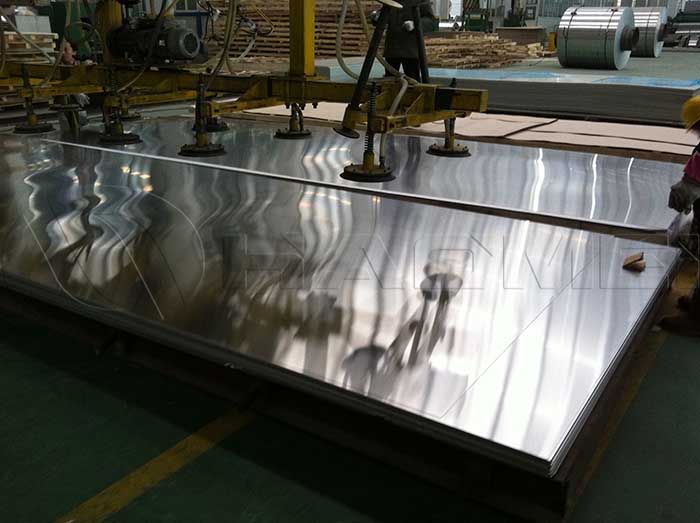
Alloy 5454 was used in tank trucks in the early 1950s, and it has good anti-corrosion properties. In addition, 5454 plates can be used in high-temperature environments, or transport high-temperature liquids. 5454 h32 aluminum is a popular choice.
5454 aluminum alloy plate production process: cold rolling processing rate of more than 70%. The annealing temperatures for states 0, H22, H24, H26, and H28 are 300°C, 260°C, 250°C, 230°C, and 200°C, respectively, and the holding time is 1 hour. The 5454 alloy H2n and O state plates produced by this process have stable properties and good formability, which meet the requirements of the EN485 standard.
5754 aluminum sheet has the characteristics of medium strength, good welding performance and excellent processing and forming performance. 5754 aluminum coil can be used to manufacture tank car bodies and bulkheads, which can reduce the weight of tank cars, increase the load, reduce fuel consumption and reduce exhaust emissions.
Moreover, the 5754 aluminum plate has strong corrosion resistance and can greatly prolong the service life of the tank car. Therefore, it is favored by the tanker truck making industry and has become the designated aluminum plate for many tank car manufacturers.
The magnesium content of 5754 aluminum sheet is higher than that of 5052, so the machinability is better. The silicon content of 5754 aluminum plate is also more than that of 5052. The silicon content affects the forging function and corrosion resistance of aluminum alloy, so 5754 aluminum plate has better forging functionality and corrosion resistance.
Original source: https://www.aluminium-tanker-plate.com/a/5454-and-5754-aluminum-sheet-for-trailers.html
How to Ensure Quality of 2024 and 7075 Aluminum Plate
As a relatively mature light-weight alloy material, aluminum alloy is widely used in aerospace. It is generally used as structural materials, which has higher specific strength and better processing performance than steel. The aerospace field mainly develops aluminum alloys with high strength, high toughness and strong corrosion resistance to meet the harsh conditions of use in aerospace.
7075 aluminum sheet is an aluminum-magnesium-zinc-copper alloy, which is a heat-treatable alloy. It belongs to superhard aluminum alloy and has good wear resistance. The aluminum plates are all ultrasonically detected to ensure that there are no blisters and impurities. 7075 t6 aluminum plate is a popular choice.
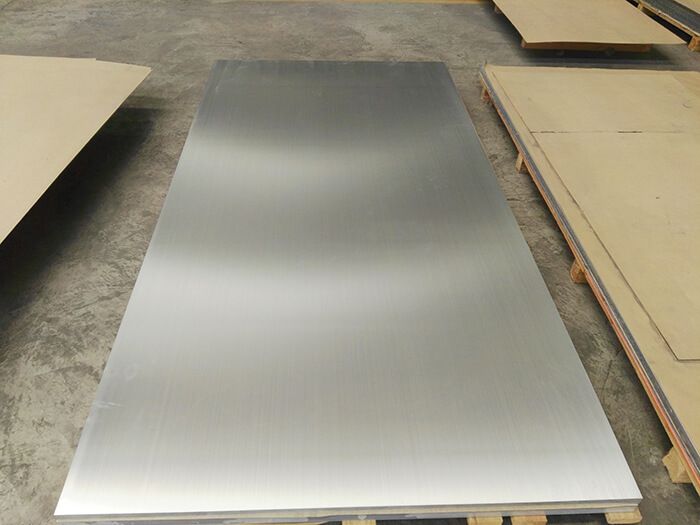
2024 aluminum is one of the strongest 2xxx alloys, with copper and magnesium being the main elements in the alloy. The most commonly used tempers are 2024T3, 2024T351, 2024T4, 2024 T6 and 2024T4. Its corrosion resistance is not so well as most other aluminum alloys and intergranular corrosion may occur under certain conditions. Therefore, it is usually clad with high-purity alloys or 6xxx series magnesium-silicon alloys.
The thick aircraft aluminum plates must be produced by ingot hot rolling (including Hazelett continuous casting and rolling method). The thick plate production capacity does not refer to the production capacity of the hot rolling mill, but the production capacity of the rear finishing equipment (solution treatment furnace, aging furnace, pre-stretching machine, ultrasonic probe production line, etc.)
2XXX series hard aluminum alloys are highly sensitive to overburning, especially the 2024 alloy, which is the most widely used in aviation. Since there is a (a+0+S) eutectic with a melting point of 507 degrees Celsius while the quenching temperature of 490-501 degrees Celsius is very close to the eutectic point temperature. 2024 aluminum is prone to overburning, so the solution heating temperature must be strictly controlled.
The aviation aluminum alloys are sensitive to the quenching transfer time, and are prone to so-called "delayed quenching", which can not obtain the best mechanical properties and aggravate the intergranular corrosion of the material. Usually, the quenching transfer time of the 2xxx alloys is less than 20s, and the quenching time of 7xxx alloys is less than 15s.
Original Source:https://www.aircraftaluminium.com/a/how-to-ensure-quality-of-2024-and-7075-aluminum-plate.html
Are Aluminum and Aluminum Alloys The Best Material for Car Manufacturing
The density of aluminum is small (2.7 g/cm³), which is about 1/3 of steel (7.8 g/cm³). Replacing steel with aluminum alloy can reduce weight by about 50%. Since the surface of aluminum is easily anodized to form a dense and stable oxide film (passivation), it has good corrosion resistance. Aluminum has good castability. Because aluminum has a low melting temperature and good fluidity, it is easy to manufacture parts of various complex shapes.
Aluminum alloys are formed by adding one or several elements to aluminum. Aluminum alloys can improve strength and hardness compared to pure aluminum. In addition to solid solution strengthening, some aluminum alloys can also be strengthened by heat treatment, so that the tensile strength of some aluminum alloys can be more than 600 Mpa. The thermal conductivity and electrical conductivity are 3 times that of steel.
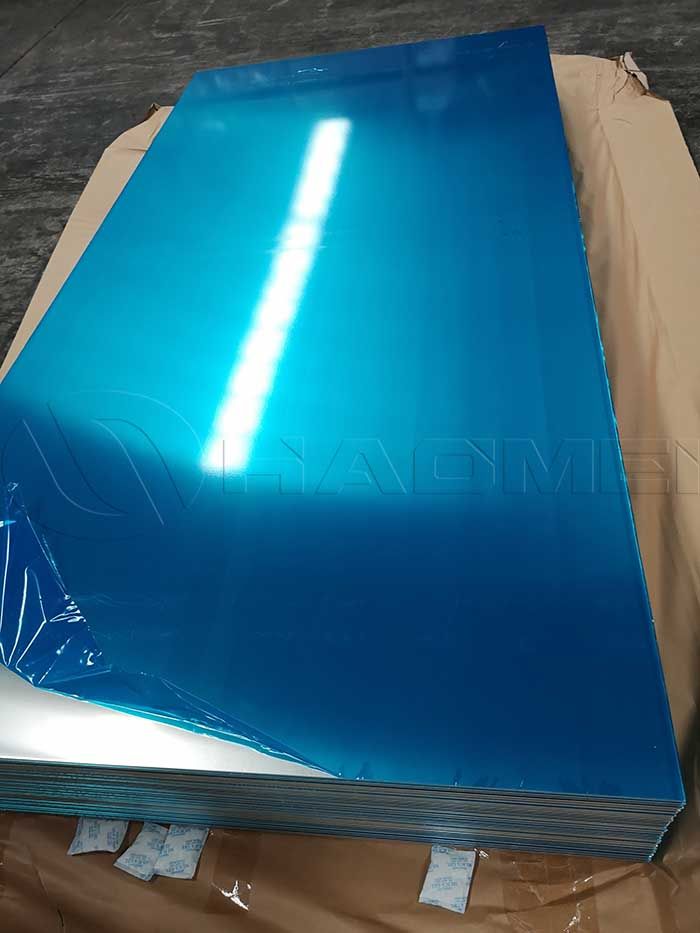
The aluminum alloys used for automobile body panels mainly include 2000 series, 5000 series and 6000 series alloys. From the perspective of materials required for automobile bodies and their processing characteristics, 2000 series and 5000 series are mainly used as inner panels of automobile panels, while 6000 series is mainly used for the outer panels of automobile panels. 5000 series and 6000 series automotive aluminum sheets are often used to replace traditional steel panels like aluminum alloy 5754.
The performance requirements for aluminum alloy sheets for car manufacturing are: in addition to mechanical properties and corrosion resistance that meet standards and specifications, they should also have the following properties:
1. Good formability, low yield-to-strength ratio and high forming limit.
2. Smooth surface.
3. Good welding performance. In order to meet the process performance requirements of welding processing of automobile parts, aluminum alloy plates need to have good welding performance.
4. Good baking hardening performance.
5. High dent resistance.
6. Excellent surface treatment and coating performance.
7. Certain anti-aging stability performance.
Comparison of 6xxx series and 5xxxx series aluminum alloys for car making
As mentioned before, aluminum alloy automobile body panels mainly include 6xxx series and 5xxx series alloys. Typical grades include AA6014, 6016, 6111, 6022, 6181, 5052, 5182, 5754 and other aluminum alloys; the thickness specifications of aluminum plates for cars are generally 0.7-2.0mm.
6xxx Al-Mg-Si(-Cu) alloy
Al-Mg-Si-(Cu) alloys are widely used in automotive panels and other fields due to their high strength and good formability. The requirements for this type of alloy are to have good plasticity before baking and high precipitation hardening ability during the baking process, that is, to have a high paint hardening response.
Al-Mg-Si-(Cu) alloy is an aluminum alloy that can be strengthened by heat treatment and has good formability, strong corrosion resistance, high strength and good high temperature resistance.
5xxx aluminum alloys
It is an aluminum alloy that cannot be strengthened by heat treatment. It has the characteristics of medium strength, good corrosion resistance, good processing performance and good welding performance.
It is easy to produce delayed yielding and Leders lines and when the grain size is >100μm, the plate is prone to the "orange peel effect", so it is usually used to make inner panels of the car body.
Original Source:https://www.autoaluminumsheet.com/a/are-aluminum-and-aluminum-alloys-the-best-material-for-car-manufacturing.html
What Are Aluminum Sheet Applications?
The selection of marine aluminum alloys is relatively strict. At present, the marine grade aluminum sheets such as 5083, 5086, 5454, 5754, 6061 and 5456 aluminum are mostly used. In practical applications, the advantages of marine aluminum alloys are very obvious.
Firstly, it has a small specific gravity, which can reduce ship weight, save energy consumption and increase load capacity; secondly, it has good corrosion resistance, which reduces oiling and other expenses and extends its service life; thirdly, it has good welding and processing formability, which is convenient for later processing.

The USS Dewey (DLG14), the first guided missile destroyer of the U.S. Navy, is 15.24m longer than the largest destroyer during World War II, and its displacement is almost twice as large. Among the 811.30t aluminum alloy used in the superstructure of the "Dewey", most of them are 5456 alloy thick plates and 5086 alloy thin plates.
Aluminum alloys on ships are divided into aluminum alloys for hull structures and aluminum alloys for outfitting according to their uses. The three alloys 5083, 5086 and 5456 are mainly used in hull structures. Since 6000 series alloys will suffer from intergranular corrosion when encountering seawater, 6000 series alloys can only be used on the upper part of ships.
Aluminum 5086 equivalent is often used to process many parts such as ship hulls, operating desks, and decks. But the most important thing is the underwater part of the hull. Especially when exposed to seawater all year round, the underwater part of the hull must be able to resist corrosion from seawater and be durable for a long time.
Marine grade aluminum plate 5456 has higher strength than 5086 and 5083, having good practicality and weldability. It is usually used for bulkheads and superstructures of the patrol boat and work boat hulls.
In terms of stress corrosion cracking susceptibility, the weight loss of 5456-H116 alloy is almost twice that of 5083-H116 alloy in a shorter aging time. When the aging time exceeds 150 h, the weight loss of 5083-H116 alloy is much higher than that of 5456-H116 alloy, indicating that after time >100 h, the structural corrosion sensitivity of 5456 alloy is much lower than that of 5083-H116 alloy.
Original Source:https://www.marinealu.com/a/what-are-aluminum-sheet-applications.html
5083 5052 aluminio para barco
Entre los muchos grados de aleaciones de aluminio, las aleaciones de aluminio marino son todas aleaciones 5xxx. El elemento principal es el magnesio. Su contenido en magnesio es del 3% al 5%. Las aleaciones de Al-Mg presentan baja densidad, alta resistencia a la tracción y alto alargamiento. Las aleaciones de aluminio 5xxx con temples H321 y H116 son actualmente una de las placas de aluminio marino más utilizadas.
La lámina de aluminio marino está empapada en agua durante todo el año y requiere una alta resistencia a la corrosión. El aluminio 5052 es una aleación de Al-Mg con excelente resistencia a la corrosión y resistencia media. Es adecuado para la fabricación de barcos económicos de aleación de aluminio. Además de usarse en el casco, también se puede usar en puentes de cables, fregaderos de barcos, pisos de compartimentos de barcos y otras partes de los barcos.

La lámina de aluminio 5052 es una aleación de aluminio típica 5xxx. El contenido de Mg es del 2,2% al 2,8%. Tiene las características de peso ligero, resistencia media, buena resistencia a la corrosión y soldabilidad, y fácil procesamiento y conformado.
Entre sus propiedades mecánicas, la resistencia a la tracción σb puede alcanzar 215-265Mpa y el alargamiento δ5≥5%. Bajo diferentes estados de endurecimiento por trabajo y tratamiento térmico, las propiedades mecánicas serán diferentes.
Los yates de aleación de aluminio para lagos de agua dulce están hechos en su mayoría de placas de aluminio 5052-H32 o 5052-0, mientras que los yates de lujo en el mar generalmente están hechos de placas de aluminio de aleación con alto contenido de magnesio 5083H116 o 5083H321. El espesor de la placa de aleación de aluminio de grado marino es generalmente de 3 a 30 mm, y el espesor inferior a 12 mm se usa más ampliamente.
En 1954, la Asociación Americana del Aluminio registró el aluminio naval 5083, considerado un material esencial para los barcos. También se utiliza mucho en muchos otros campos. Con alta resistencia, resistencia a la corrosión, buena plasticidad y propiedades de soldadura, la aleación de aluminio 5083 rápidamente ganó popularidad en la industria de la construcción naval. Hasta ahora, entre todas las aleaciones de aluminio, la aleación 5083 casi no tiene competidores.
Fuente original: https://www.placadealuminio.es/a/5083-5052-aluminio-para-barco.html
Automotive Aluminum Plate Supplier
The alloys of the automotive aluminum plate are mainly 6016-T4/T4P, 6111-T4/T4P, 6014-T4/T4P, and 6451-T4/T4P alloys. A small amount of aluminum plates are 5182-O and 5754-O alloys. 6111 alloy is an American alloy, registered with the American Aluminum Association in 1982; 6014 alloy was developed in Switzerland and registered with the American Aluminum Association in 1983; 6016 alloy is also a Swiss alloy, formed in 1984 and registered in the American Aluminum Association.
Covering parts such as doors and hoods have very low strength requirements, and the most important requirement is rigidity and deformation. Ordinary mild steel or 6000 series automotive aluminum sheets can be used here.

The weight-saving effect of aluminum plates is clearly reflected in these parts. However, because the formability of aluminum is not good enough, if a small scratch occurs, the aluminum plate cannot be repaired and can only be replaced.
Car wheels generally include steel rim wheels, aluminum alloy wheels, magnesium alloy wheels, and carbon fiber composite material wheels. Generally, small cars generally use aluminum alloy wheels. Because aluminum alloy wheels are more energy-saving, comfortable, and safer than steel wheel hubs.
Aluminum alloy wheels are made of aluminum as the basic raw material, and then appropriately added with metal elements such as manganese, magnesium, and titanium. This material is much lighter in weight than other materials. Moreover, the heat dissipation of aluminum alloy wheels is quite good, which can extend the life of the tires.
High Comfort Aluminum alloy wheels have metal features that absorb vibration and rebound force. They are formed in one piece and are processed using CNC machine tools with high dimensional accuracy, high roundness, small yaw and good balance, making the car stable and comfortable. Using aluminum alloy wheels has a very obvious effect on reducing fuel consumption of cars, and most car wheels use 6061 aluminum alloy.
Currently, 6061 aluminum plates are commonly used in automobile fenders. 6061 aluminum plates have good mechanical properties. Its density is only 1/3 of steel, and its machining performance is 4.5 times that of iron. 6061 aluminum alloy car fenders neither increase the weight of the vehicle nor damage the car. The oxide film formed on the surface of the 6061 aluminum plate can prevent the fender from rusting.
As a big aluminum sheet supplier, Haomei Aluminum can supply the main 5xxx and 6xxx alloy grades. Welcome to leave message below to inquire what you need.
Original source: https://www.hm-alu.com/a/automotive-aluminum-plate-supplier.html
How To Ensure Diamond Pattern Aluminium Sheet Quality
The surface of the aluminum plate is smooth and flat without patterns. It is a product made of cast-rolled coil blanks through pressure rolling. The diamond pattern aluminium sheet is made by embossing equipment on the basis of aluminum plates or aluminum coils. Due to processing reasons, the price of patterned aluminum plates of the same alloy is higher than that of aluminum plates. How to ensure aluminum tread plate quality?

1. Material selection
Generally speaking, 5 bar aluminum tread plates use aluminum alloy plates as the base material.
When selecting aluminum alloy plates, factors such as strength, corrosion resistance, and wear resistance need to be taken into consideration to meet the use requirements of patterned aluminum plates.
2. Surface treatment
The surface treatment of aluminum diamond plates is a key link in the production process.
Common surface treatment methods include anodizing, spraying, fluorocarbon spraying, etc.
These surface treatment methods can improve the corrosion resistance, wear resistance, weather resistance and other properties of the aluminum checker plate.
3. Pattern production
During the production process of aluminum tread plates, the patterns need to be pressed or punched out according to the design requirements.
Common pattern production methods include embossing, punching, oxidation casting, etc.
No matter which method is used, it is necessary to ensure that the pattern is clear, beautiful, and can be integrated with the base material.
4. Processing technology
The processing technology of aluminum diamond plates is also an important part of the production process. According to the specific use requirements of the product, the patterned aluminum plate needs to be cut, bent, punched, etc. These processes require strict control of parameters to ensure the dimensional accuracy, edge flatness, etc.
5. Quality requirements
In order to ensure the quality of patterned aluminum plates, corresponding standards and inspection requirements need to be formulated.
Common quality requirements include appearance quality, dimensional accuracy, physical properties, chemical composition, etc. Establishing strict quality standards can ensure the consistency and reliability of 5 bar aluminum tread plate. 4x8, 5x10 and 4x10 aluminum diamond plates are these popular sizes. Welcome to leave message below to inquire what you need.
Original site: https://www.alumhm.com/a/how-to-ensure-diamond-pattern-aluminium-sheet-quality.html
How to Avoid Scratch of Colored Coil Stock
Aluminum Jacketing: Polysurlyn Laminated Aluminum Coil
How Is FSW Aluminium for Shipbuilding Produced #aluminum #shipbuilding
Haomei Aluminum provide wide and extra wide aluminum FSW plate for the superstructure of the ships. It will help you shorten the constructio...

-
With the spread of energy saving and emission reduction concept, lightweight vehicles have been quickly promoted. Aluminum alloy is one of...
-
In the vast world of aluminum alloys, 5052 and 5754 aluminum alloys have become effective materials in many fields due to their unique pro...
-
In the field of food packaging, the packaging of butter is crucial. It not only ensures the quality and freshness of butter, but also attr...